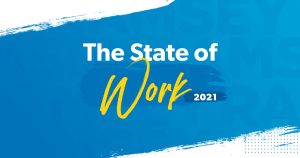Renewable energy development is surging around the world, fueled by technological innovation, customer demand, and climate change policies like the Inflation Reduction Act. Renewables generated a record 30% of global electricity in 2023, driven by dramatic gains in the solar and wind energy sectors (solar grew by an astonishing 23% last year). In the EU, solar and wind generated more electricity than fossil fuels in the first half of 2024. In the U.S., since the 2022 enactment of the Inflation Reduction Act (IRA), companies have invested $117 billion in solar, wind, battery, and electric vehicle manufacturing, creating 100,000 new jobs.
Given the favorable economics, this exciting wave of renewables development will not be cresting anytime soon. Millions of well-paying jobs will be created in the U.S. in the coming decade thanks to these and other clean technologies.
This economic progress will not be spread evenly: Growing numbers of state and local lawmakers are attempting to banish renewables from their communities. A June 2024 study by Columbia Law School’s Sabin Center for Climate Change Law identifies at least 395 local restrictions across 41 states, in addition to 19 state-level restrictions, that are so severe that they could have the effect of blocking renewable energy projects altogether.
This is unfair to the residents of these states, who have every right to expect their leaders to seize major economic opportunities for their benefit. Considering the stakes for wealth-building, state policy makers should be required to explain exactly what steps they are taking to catch the rising wave of renewables development.
States Face Transition Risks As Well As Opportunities
Policy makers opposed to renewables typically use the language of cultural warfare. This is a distraction. Arguably, the best way to evaluate a state’s refusal to put out a welcome mat for renewables, or at least to carefully assess renewable energy’s benefits, is through the lens of financial risk management.
Regulators and investors charged with evaluating banks frequently highlight the importance of addressing transition risk as part of an enterprise-wide risk management framework. The consensus view is that the dramatic changes underway globally due to the transition away from carbon-intensive business models require significant attention. As key actors in the global economy suddenly come to terms with the reality of climate change and the availability of inexpensive technologies to reduce carbon emissions, a bank’s failure to prepare could result in exposure to a sudden and massive deflation of carbon-intensive assets.
Lack of preparedness for the transition poses similar risks for states. When private investment in renewable energy and other low-carbon technologies is excluded from a state’s portfolio, those investments go elsewhere, as do opportunities to build a workforce prepared for the emerging clean energy economy. Meanwhile, states are forced to grapple with the costs of remediating abandoned oil wells and other stranded carbon-intensive assets–without the benefit of new tax revenues from ascendent low-carbon industries.
State management of transition risk must account for the fact that businesses with the flexibility to choose where to locate are prioritizing renewables in their energy procurements. This corporate demand for renewables is not limited to the big tech companies, all of which are seeking renewable power for their data centers. The 400-plus members of the RE100 initiative have committed to procuring 100% of their electricity from renewable sources by various target dates between 2030 and 2050.
Where will renewables be generated to satisfy this demand? Increasingly, the proximity of renewable energy production to load matters to big customers. As shown by the 24/7 Carbon-Free Energy Compact, many corporate and government electricity users today are designing procurements that factor in the location and timing of renewable energy deliveries in addition to considering the roles of nuclear energy, energy storage, and grid enhancements. The U.S. government, the world’s largest buyer of products and services, has set a target of transitioning its procurement to 100% carbon-free electricity by 2030, at least half of which will be locally supplied clean energy to meet 24/7 hourly-matched demand.
Georgia Governor Brian Kemp frequently acknowledges corporate demands for carbon-free electricity, even though his state is among those where climate change is a deeply partisan issue. “Talking to the companies that we’re recruiting, people that are looking to the state, they obviously want to produce with clean energy,” Kemp said in January. With this embrace of the energy transition, he has succeeded in making his state a hub for electric vehicle and battery manufacturing.
Seizing the Opportunity Requires Understanding Renewables-Friendly Legal Frameworks
State policy makers seeking to capitalize on the transition for the benefit of their constituents must do more than issue press releases; they must embrace transition-friendly policies. This starts with the IRA, which provides the most powerful set of transition incentives in world history. The law’s tax incentives for renewables and other low-carbon technologies make large upfront capital investments feasible, as shown by its remarkable development-spurring track record to date.
States also must study up on the host of IRA provisions available to help underserved communities participate in the transition. For example, the direct-pay provisions enable nonprofits, religious institutions, and other entities without the ability to use tax credits to offset their tax liability to receive the cash value of those credits for solar, battery, and electrification projects. The law also allows tax credits to be transferred from renewable energy developers to third parties. As the Nicholas Institute at Duke University has shown, the direct-pay and transferability provisions can be “chained” to enhance the IRA’s benefits for both community organizations and renewable energy developers.
States seeking to create a welcoming and stable business environment for renewable energy developers and other low-carbon technology innovators will ultimately need expertise on more than just the IRA. Fortunately, abundant educational resources are available. An excellent resource is the Legal Pathways for Deep Decarbonization project, which provides model legislation to advance decarbonization in virtually every sector of the economy. A collaboration of the Columbia Climate School and Widener University Commonwealth Law School, it offers more than 2,500 model laws, many for the benefit of state policy makers.
Overcoming Political Gamesmanship
Those policy makers willing to do the work needed to prepare their states for the transition should expect resistance. Much of the pushback will come from deep-pocketed advocacy groups connected to the fossil fuel industry, such as the Texas Public Policy Foundation, which uses influence campaigns, model legislation, litigation, and misinformation about climate science in an attempt to stymie the transition.
With their deceptive narratives and culture warring, these advocacy groups have politicized the energy transition–all for the purpose of propping up unsustainable fossil fuel companies and undercutting urgently-needed action on climate change.
State policy makers must reject this political gamesmanship and accept economic reality: renewables will soon serve as the primary energy source for the global economy. Refusal to participate in the transition to a decarbonized economy means denying their constituents the wealth-building opportunities they rightly expect and deserve.
Read the full article here
















